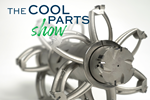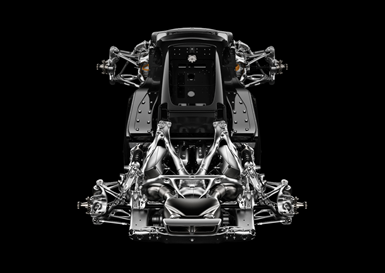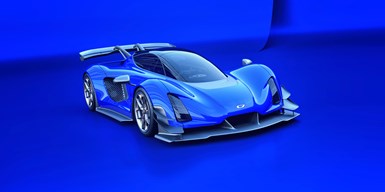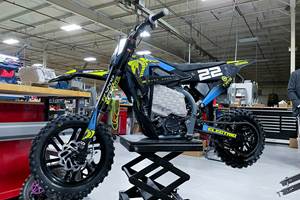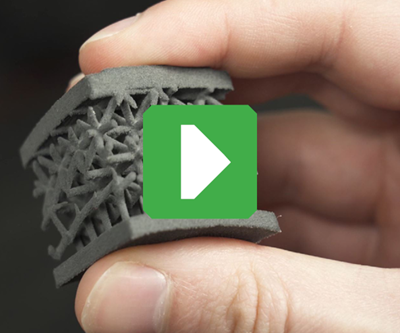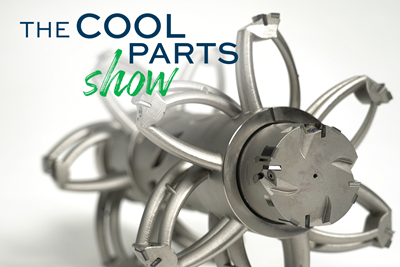Divergent Technologies Eyes High-Volume, Optimized Automotive Production Through Additive
While some automotive OEMs are using additive here and there, Divergent Technologies is basing its vehicles on 3D printed structures.
For the chassis of the Czinger 21C there are some 350 parts printed, most with aluminum alloys. The parts are assembled in a fully automated cell. Adhesive bonding is primarily used.
Photo Credit: Divergent Technologies
One of the most notable vehicles at the 2016 Los Angeles Auto Show didn’t come from a major OEM.
Rather, the Blade, an exotic hypercar, was staged by a Torrance, California-based company named Divergent Technologies.
The reason the car garnered so much attention — in addition to the exceptional execution of the body — was because it was promoted as being “3D printed.”
At that time, the whole notion of a 3D printed car was as exotic as the vehicle itself.
Kevin Czinger, founder, lead inventor and CEO of Divergent had a hit on his hands.
Mike Kenworthy, chief technology officer at Divergent, says that what was meant to be a technology demonstrator had such positive feedback that the decision was made to fully develop the car, which is now known as the 21C and produced by Czinger Vehicles, a separate company that was created in 2019 and shares space with Divergent.
After the 21C, Czinger didn’t have just the creation of a car in mind. He worked to develop a different way to design, engineer and manufacture vehicles.
A Whole Systems Approach
The 21C is a hybrid — the total output is 1,250 hp. The additive-intensive car has a curb weight of approximately 2,910 pounds. It has a base price of approximately $2 million.
Photo Credit: Divergent Technologies
The Divergent Adaptive Production System (DAPS) was created, a system that includes artificial intelligence, robotics, advanced materials and, arguably at the heart of it, additive manufacturing.
One of the fundamentals of DAPS, Kenworthy says, is that there is no design-specific tooling. If something needs to be changed, then it is a matter of programming, not cutting metal for new tools, whether these are tools to create or process the components.
This is why additive is essential to the process.
“We’re doing around 350 parts per vehicle,” Kenworthy says, “primarily aluminum printed components.” There are some nickel- and titanium-alloy parts and a “handful” of fiber-reinforced plastic parts.
While traditional OEMs are using additive mainly to produce trim pieces or assembly aids, Divergent is printing the 21C’s chassis, as well as structural components such as rear frames and engine cradles for the company’s other automotive customers.
Creating the Code for Optimization
Kenworthy says that Divergent personnel spent a number of years developing the ways and means to create components to the extent that they created the company’s own topology optimization software called Bi-directional Evolutionary Structural Optimization.
Kenworthy says that because a given structure, such as a rear frame for a vehicle, is too large to be printed in a single piece, it is designed so that it will be constructed of X-number of pieces. The design software takes into account not only how to partition the overall component but the requirements of the automated assembly cell that will put those parts together, as well as the assembly sequence.
“We’re looking at the overall Pareto optimization — the Pareto frontier of that massive set of system constraints and then picking the best overall solution. This is where the humans come into the AI design —picking the design that will be used.”
Faster Processing
Then there is the additive process. The primary type of equipment that Divergent is using is an SLM Solutions NXG ZII 600, a machine that deploys 12 1,000-W lasers and provides a work envelope of 600 x 600 x 600 mm. Divergent has five systems and Kenworthy says the company has been working with SLM for about five years.
“We’ve been operating it for about two years now,” he says, and that compared to firms using other state-of-the-art, four-laser systems, “We’re generally printing, depending on the circumstance, 10 to 20 times faster than service bureaus operating with that other equipment.”
He says that Divergent is printing, on average, “around a kilogram or a kilogram-and-a-half per hour.”
Materials and Adhesives
Which goes to the materials. “When it comes to aluminum, this is where we focus our development. We invented and developed a number of proprietary aluminum alloys optimized for our system and for different applications across a car.”
For example, Divergent developed an alloy for crash-energy management structures and another for high-temperature applications. It uses suppliers to create the powders to its specifications.
The parts are printed and move to the robot-based automated assembly cell. Kenworthy says that Divergent primarily uses adhesive bonding to put components together.
And the company developed its own adhesives. He says that in the assembly, components are put together initially with a UV-cured adhesive. “Think of these as tack welds,” he says.
The company personnel performed hundreds of adhesive tests, he says, and the best one they were able to find could UV cure in about 40 seconds.
The adhesive Divergent developed cures in about three seconds. What’s more, Kenworthy says, the primary structural adhesive used to fully bond the parts is heat cured and the UV curing adhesive is capable of doing its job during the heat curing.
While it may sound like Divergent has developed quite a few things, this is only scratching the surface. Kenworthy says it has extensive intellectual property, including over 500 patents, ranging from the software used to the materials to the part designs. “We spent a number of years engineering the joint architecture and the overall system to enable that.”
Growing the Volumes
Although the 21C is going to be limited to 80 units, Kenworthy notes that Czinger is going to be coming out with higher-volume models like the four-passenger Hyper GT.
Kenworthy says that DAPS is configured to be able to accommodate high volumes—and he’s talking in the thousands, not hundreds.
Not only are there the vehicles being built for the Czinger brand, but work being done for other OEMs: “Were focused initially on the luxury brands within larger automotive groups” — and he says these are companies anyone would recognize— “demonstrating the technology, then moving down into other segments.”
He emphasizes that Divergent is not a service bureau: “We’re a Tier One manufacturer. We do the full scope of design, engineering and validation. We become embedded in the overall vehicle timeline and processes.”
And he is a believer in the benefit of additive to automotive manufacturing on a larger scale. He points out the frame structures and suspension components the company is currently producing account for as much as 100 kg of printed mass on a car.
“The companies that deploy these types of solutions are going to be more successful and outcompete those that aren’t,” he says.
Related Content
3D Printing with Plastic Pellets – What You Need to Know
A few 3D printers today are capable of working directly with resin pellets for feedstock. That brings extreme flexibility in material options, but also requires greater knowledge of how to best process any given resin. Here’s how FGF machine maker JuggerBot 3D addresses both the printing technology and the process know-how.
Read MoreNew Zeda Additive Manufacturing Factory in Ohio Will Serve Medical, Military and Aerospace Production
Site providing laser powder bed fusion as well as machining and other postprocessing will open in late 2023, and will employ over 100. Chief technology officer Greg Morris sees economic and personnel advantages of serving different markets from a single AM facility.
Read MoreNew Electric Dirt Bike Is Designed for Molding, but Produced Through 3D Printing (Includes Video)
Cobra Moto’s new all-electric youth motocross bike could not wait for mold tooling. Parts have been designed so they can be molded eventually, but to get the bike to market, the production method now is additive manufacturing.
Read MoreAdditive Manufacturing Is Subtractive, Too: How CNC Machining Integrates With AM (Includes Video)
For Keselowski Advanced Manufacturing, succeeding with laser powder bed fusion as a production process means developing a machine shop that is responsive to, and moves at the pacing of, metal 3D printing.
Read MoreRead Next
Video: Topology Optimization versus Generative Design
Why do these strategies matter in design for additive manufacturing (DFAM), and what’s the difference? A conversation with PADT’s Eric Miller explores AM and design, including its human element.
Read More3D Printed Tool for Machining Electric Vehicle Motors: The Cool Parts Show #39
Additive manufacturing achieves a large-diameter cutting tool light enough for fast, precise machining of the motor housing’s stator bore.
Read MoreHybrid Additive Manufacturing Machine Tools Continue to Make Gains (Includes Video)
The hybrid machine tool is an idea that continues to advance. Two important developments of recent years expand the possibilities for this platform.
Read More
.jpg;width=70;height=70;mode=crop)

